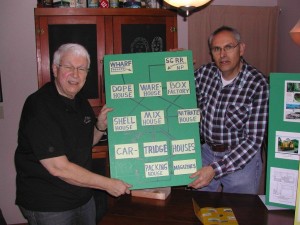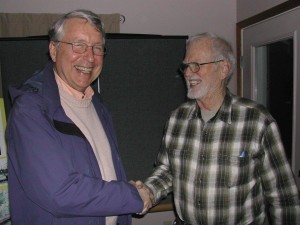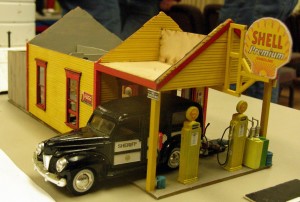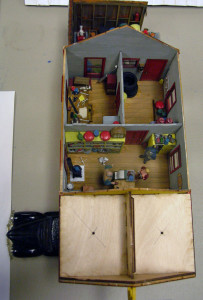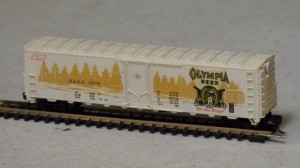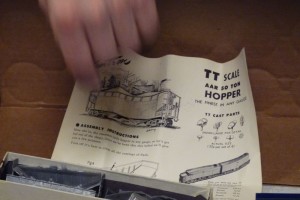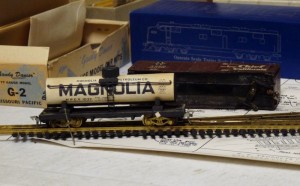Tom Crawford, Registrar
This is the final anticipated “blast” before the Iron Horse Express convention. A last minute reminder to register, purchase trips and company store items, plus several housekeeping items. For actual up to the minute information check the Convention website.
Hotel Rooms
The block rate guaranteed price is only available through Wednesday, March 20. If you want to stay at the convention hotel and have not reserved a room, you must do so by then to get the convention rate. Call 925-828-7750 and reference room code RRA.
Layout Tours and Operating Sessions
Several South Bay layouts will be open on Wednesday afternoon and evening so you can visit them on your way to the Convention. Check the Schedule page of the Convention website to see which layouts will be open when.
Maps and addresses of all open layouts will soon be available. Check the Layout Tours page of the Convention website for info. Look for the “Maps and Directions” button.
If you are interested in joining an Operating Session, email Dave Parks. He will contact you and get you scheduled.
Hands-On Clinics
In addition to our regularly scheduled clinics, we have three hand-on clinics on Thursday where you can participate in making/doing things. Two of these are restricted in attendance.
The Turnout Clinic has a $4 materials fee for the turnout you will make and take home. Sign up for Jim Petro’s Turnout Clinic at Registration – the clinic will be presented three times, with a maximum of 7 participants each time.
George Pisching’s Foam Terrain Clinic will be presented three times with a maximum of 15 participants each time. Sign up at Registration.
Professional photographers and modelers Franklin Avery and Mike Blumenstaadt will do a clinic on lighting and photographing model railroad layouts. They ask that attendees bring their own camera, preferably one with manual controls, for some hands-on practice.
Swap Meet
There are still tables available for Friday night’s Swap Meet. Reserve yours on-line or at the registration desk.
Niles Canyon Steam Train Ride
We still have space available. Purchase through the on-line store or the registration desk.
Company Store
If you registered before the Convention Car was available and missed it on the website, it is an Accurail three-bay covered hopper with data only and decals of the convention logo and up to six car numbers. The decal sheets are also available separately. We have a rapidly-dwindling supply of shirts and ball caps still available.
PCR Annual Meeting and Breakfast
Everyone is encouraged to attend Sunday morning’s Annual Meeting. You do not need to attend the breakfast to attend the meeting, but if you want the partially subsidized buffet breakfast you must register by Thursday morning, either through the on-line store or at registration, in order for us to give the hotel a proper meal count.
Awards Banquet
The Awards Banquet is buffet style with what we believe are adequate options for vegetarian eaters. If you have more restrictive dietary issues, please let us know at registration and we and the hotel will do our best to accommodate you.
Rails Around The Bay
Several potential schedules are available at the registration desk and some will be posted on the website shortly. One schedule may be of particular interest to those arriving Tuesday. If you leave the hotel by 7:50 a.m. Wednesday morning, you can go completely around the bay and be back in time to catch the first clinic or Board of Directors meeting at 1:00 p.m. DISCLAIMER: of course delays on Amtrak, Caltrain or BART could impact the return time.
Iron Horse Trail
An Iron Horse Trail description will be available at registration. We suggest BYOB (Bring Your Own Bike) if you would like to bike a part or all of the trail. Otherwise, “Just Take a Hike.”
MilitaryVehicleMuseum
Both tours have been cancelled and full refunds will be made. Please note the museum is open that day and the tour slots reserved for us are available by emailing them. They request a $20 donation. You will need your own transportation.
Door Prizes
We have numerous Door Prizes donated by both manufacturers and PCR members, but can always use more. This could be a great opportunity to clear your work shop of any scale items you are not currently modeling. We would appreciate only new items still in boxes.

